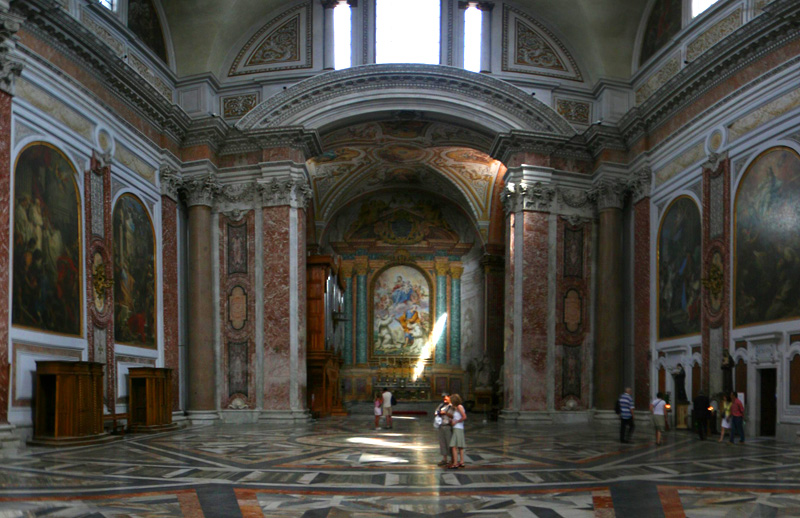
This image of Santa Maria degli Angeli e dei Martiri in Rome is part of one of the panoramic images found on the PanoramicEarth.com Tour of Rome. There are over 100 images taken from around Rome linked to an interactive map.
The Meridian Line
The Basilica also contains an unusual astronomical installation. In the right hand side of the transept is a meridian line, a sort of sundial. It was built on the order of Pope Clement XI by Francesco Bianchini. The meridian line had a 3-fold purpose:
(1) the pope wanted to check the accuracy of the Gregorian reformation of the calendar,
(2) to produce a tool to exactly predict Easter,
(3) to give
There were several reasons for choosing
(1) The church was orientated to the south and received unobstructed exposure to the sun
(2) The high walls allowed for a longer line resulting in more accurate measurements.
(3) The walls are ancient, and were thus unlikely to settle of move any further]. This meant that carefully calibrated observational instruments set in them would not move out of alignment.
(4) Because it was set in former pagan site, it would represent a victory of the Christian calendar over the earlier pagan calendar.
The view in this image is taken from near the centre of the transept looking towards the north end. The volume of space and size of the pillars dwarfs the people in the picture. The painting above the altar is The Apparition of the Virgin Mary to St Bruno by Giovanni Odazzi. The organ to the left of the altar was built in the 1990’s. The whole image is found on the
For more articles on Rome see the Rome Index or select one of the labels at the bottom.
No comments:
Post a Comment